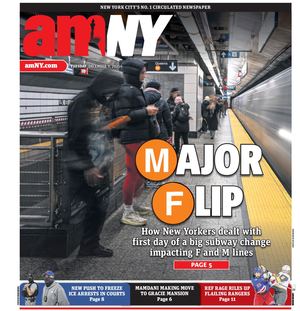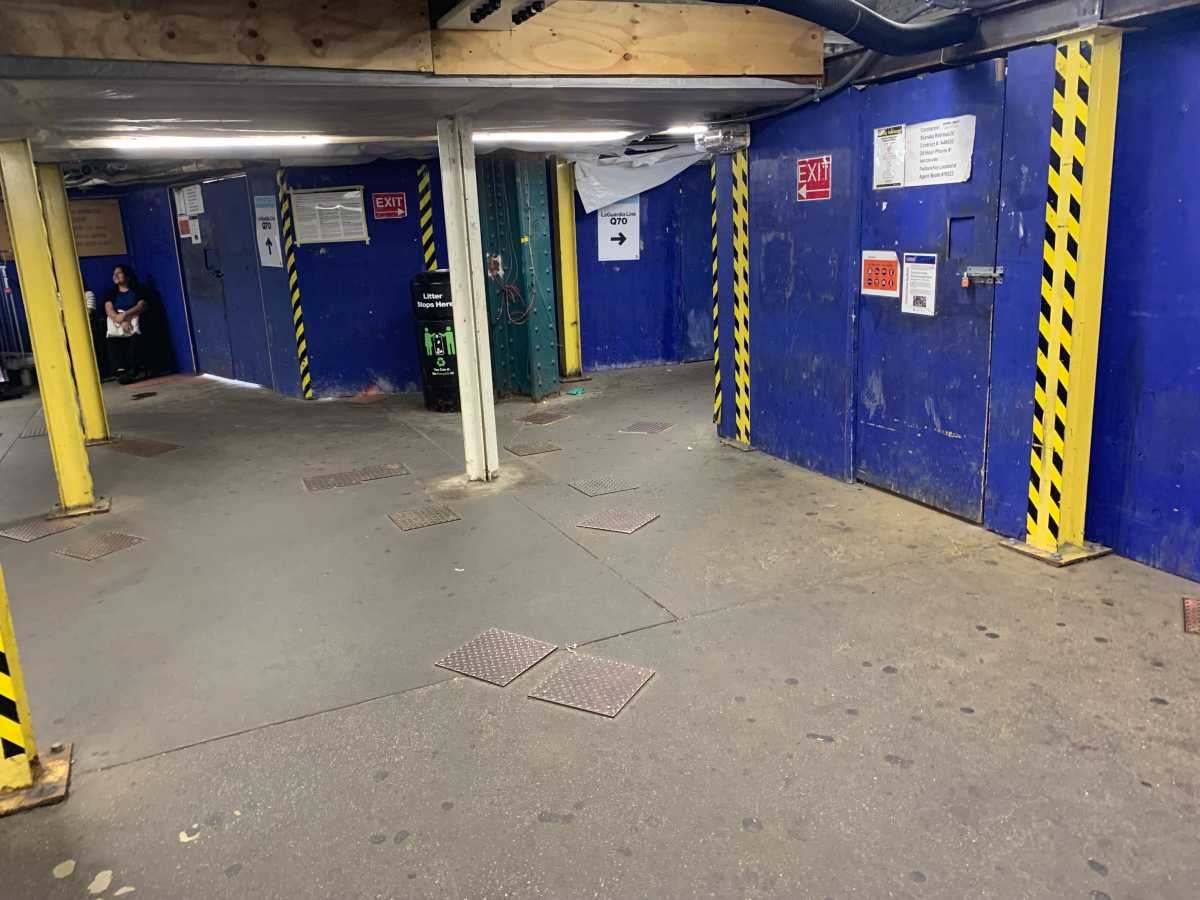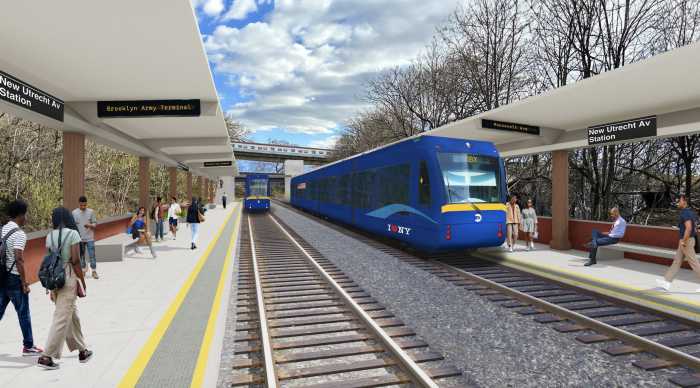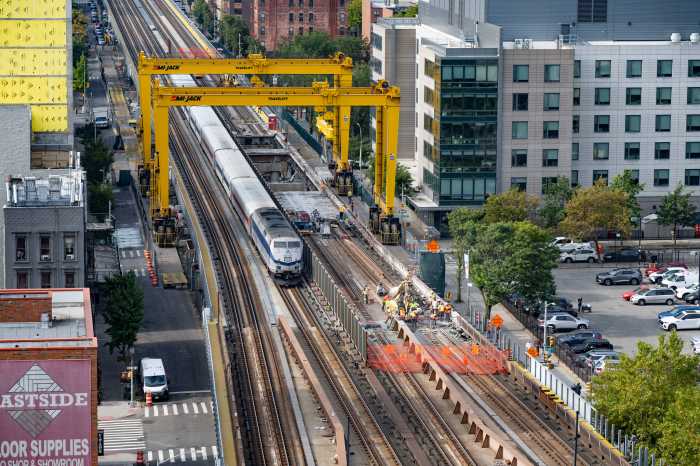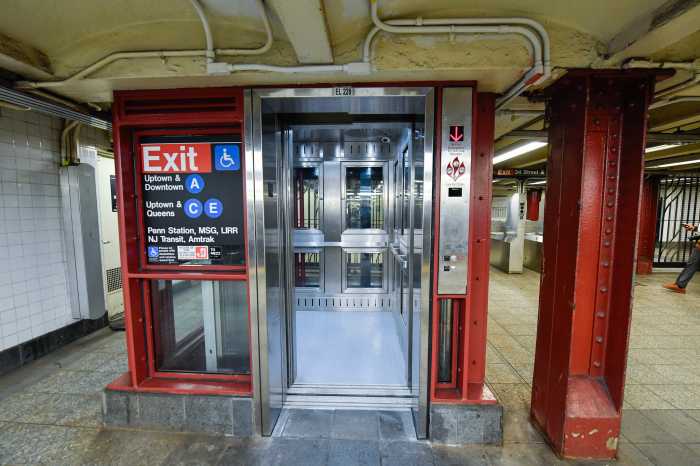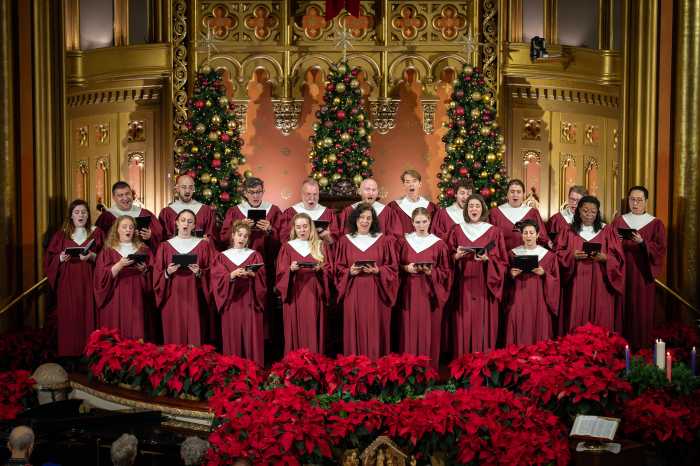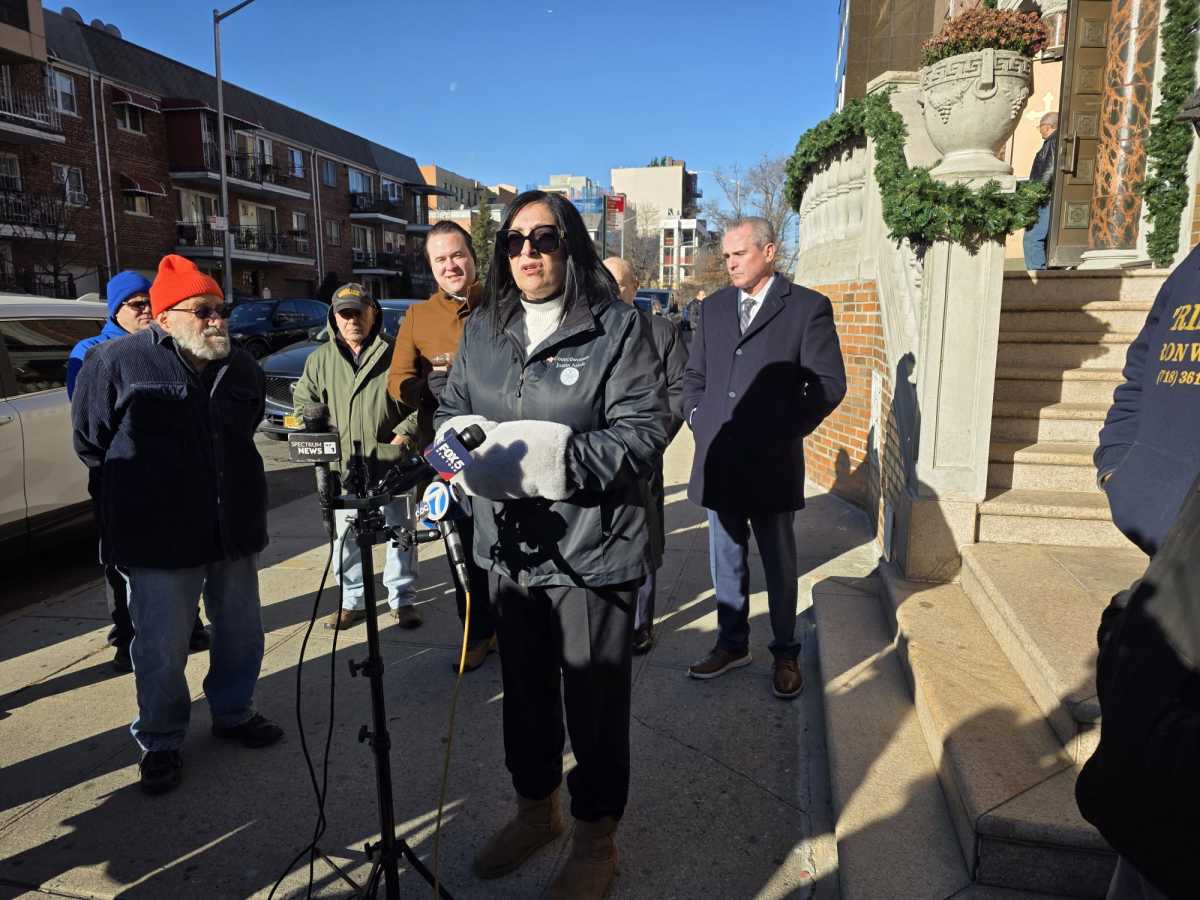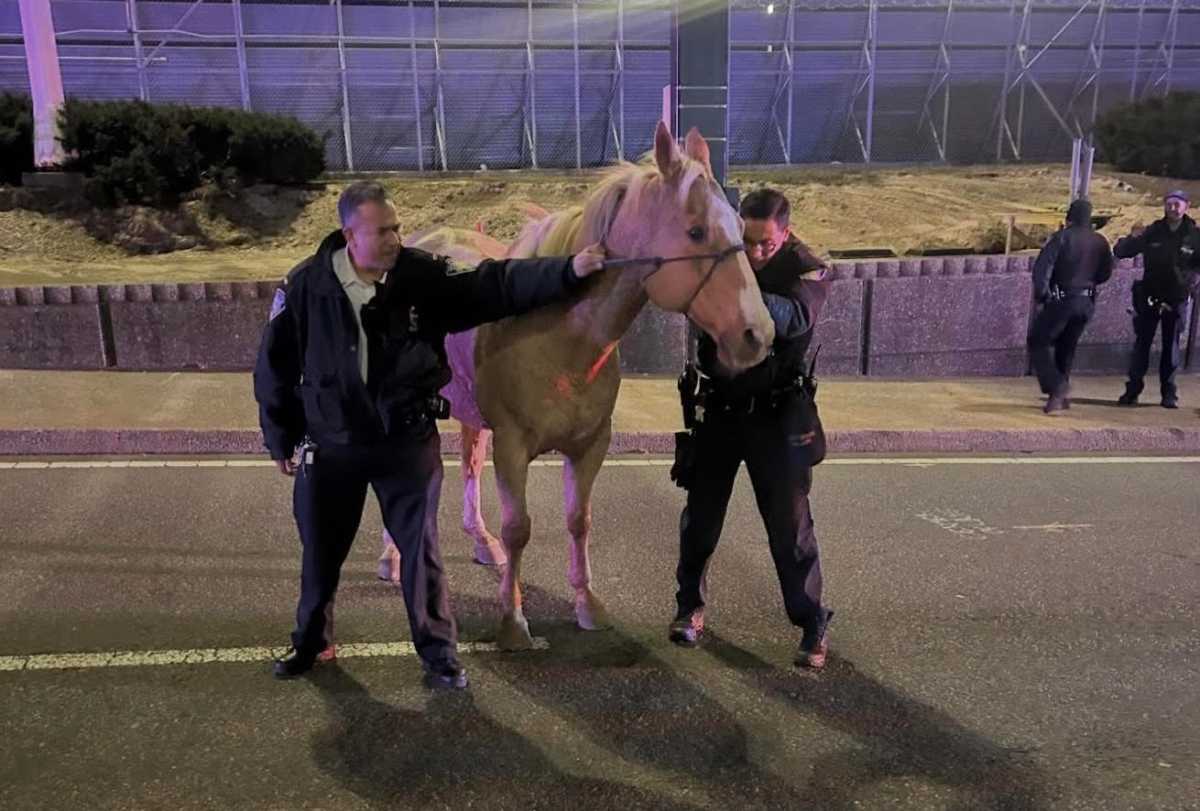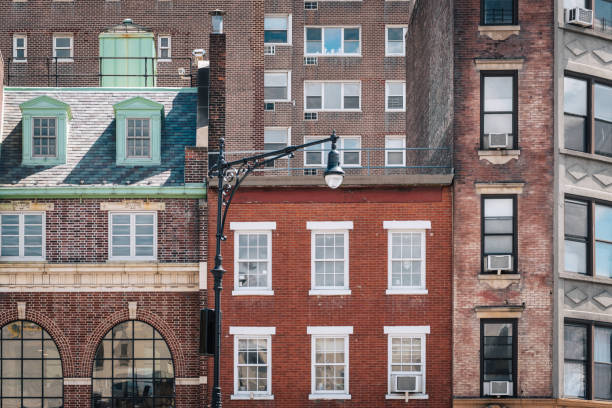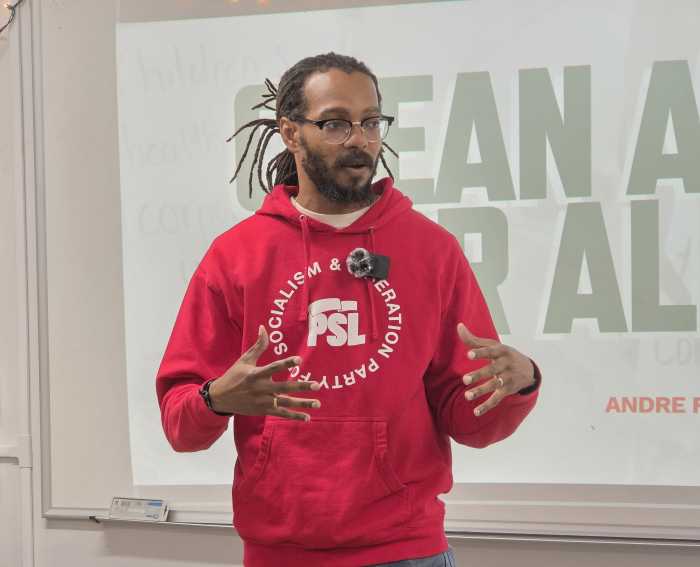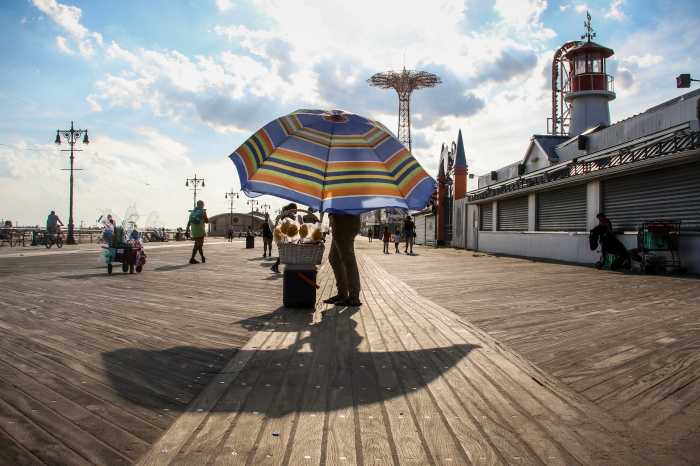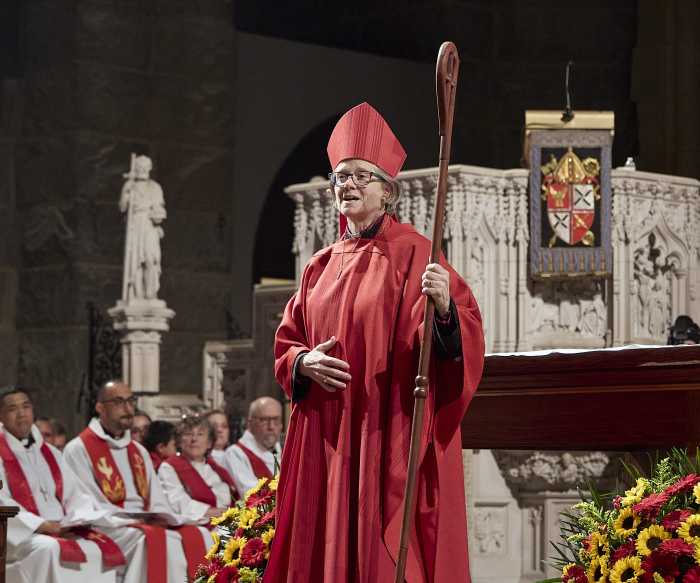Commuters on one of NYC’s most traveled subways are facing a two-year delay on repair work, MTA officials said during a monthly committee meeting on Monday.
The setback is due to the discovery of severe, unforeseen deterioration of steel supports — also known as girders — that hold up the 7 train tracks and platforms above Roosevelt Avenue at the 61st Street station in Woodside, Queens.
Other stations, including 69th Street and 52nd Street, are part of the construction project, which was initially slated for completion in May 2025. The work is not expected to be completed until May 2027.
Due to the unexpected circumstances, the MTA must now spend an additional $30 million in costs to address the issue; a revised estimate for the full Flushing Line rehab project is now $343 million, up from the original $315 million price tag.
“Our initial plan was straightforward,” Bill Montanile of the MTA’s Stations Business Unit said. “Replace the track and platform, replace select steel elements, and repair the majority of the existing structure. However, once concrete demolition began, the situation changed dramatically.”
Hidden beneath the track slabs, workers found “significant corrosion” on cross girders, damage that had remained concealed for years. They also discovered extension decay in 23 of the 31 girders.
Similar deterioration was also seen on the track girders.
“This discovery made it clear,” Montanile said. “Full replacement, not partial repair, was now essential to ensure the safety and integrity of the structure.”
7 train station has been rotting for years
Despite the MTA’s statements Monday, the problems at Woodside-61st Street are nothing new. In 2019, QNS, now a sister site of amNewYork, reported on extensive rusting, peeling lead paint and deterioration at the transit hub. The report came on the heels of several incidents in which debris fell off the 7 line and struck vehicles below on Roosevelt Avenue.
MTA crews came in to shore up the tracks at the time to prevent further falling debris. Yet, as Monday’s announcements seemed to confirm, the rust and rot observed six years ago were only a harbinger of even worse problems at the station.
So far, the 61st Street station rehabilitation project is only about 47% complete, according to the MTA. Temporary fixtures have been installed to permit ongoing work without significantly impacting train traffic, commuters and the community.
The MTA’s announcement about the delay comes after the agency began halting 7 train express service during rush hours through Nov. 21.
The recent disruptions are the result of the MTA’s continued 7 train overhaul, which began in 2022 at Grand Central Terminal. Repairs began at the Woodside-61st Street stop the following year. Since then, stations along the Flushing Line, many of which are over 100 years old, have been upgraded or are receiving updates.
Work at the 74th Street station on the 7 has also fallen behind. A new escalator planned for 61st Street is scheduled for completion in 2026.
While a new, wider escalator model is being installed behind large barricades, the elevator and walkways into the station remain open. However, the prolonged timeline has led to increased long lines at the station elevator.
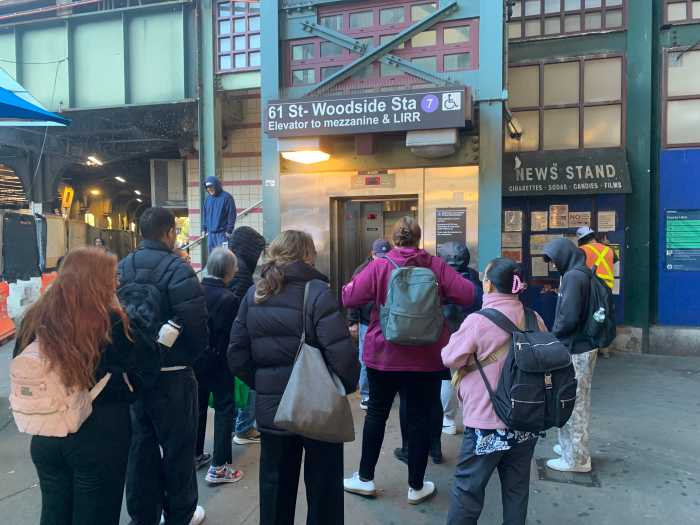
The ‘astonishing work’ on the 7 train can lead to delays
Jamie Torres-Springer, president of MTA Design and Construction, explained that as the agency rebuilds several 100-year stations simultaneously, there will inevitably be delays for various reasons.
“That astonishing work that is happening at 61st in Woodside, no question. We could have just walked away and said, ‘This is too complicated. We’ll come back and do it another time.’ But we didn’t,” Torres-Springer said. “So that means that overall, the work on the Flushing Line is going to take a little longer.”
The 7 train is one of the busiest lines in the MTA system, and the extended repair timeline is likely to cause continued inconvenience for thousands of daily riders. Despite the challenges, officials emphasized the importance of the work.
“Once completed, this project will restore the elevated station and portion of line structure to a state of good repair,” Montanile said.
